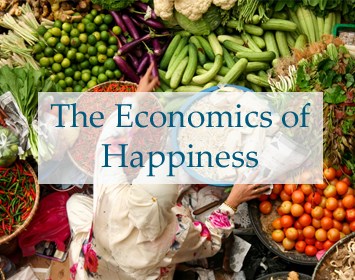Inauguration 2017 Special Coverage w/ Angela Davis, Naomi Klein, Ralph Nader & More
Menu

Special coverage in the Trump Era
From Public Citizen's Corporate Presidency site: "44 Trump administration officials have close ties to the Koch brothers and their network of political groups, particularly Vice President Mike Pence, White House Legislative Affairs Director Marc Short, EPA Administrator Scott Pruitt and White House budget director Mick Mulvaney."
Dark Money author Jane Mayer on The Dangers of President Pence, New Yorker, Oct. 23 issue on-line
Can Time Inc. Survive the Kochs? November 28, 2017 By Jane Mayer
..."This year, among the Kochs’ aims is to spend a projected four hundred million dollars in contributions from themselves and a small group of allied conservative donors they have assembled, to insure Republican victories in the 2018 midterm elections. Ordinarily, political reporters for Time magazine would chronicle this blatant attempt by the Kochs and their allies to buy political influence in the coming election cycle. Will they feel as free to do so now?"...
"Democracy in Chains: The Deep History of the Radical Right’s Stealth Plan for America" see: our site, and George Monbiot's essay on this key book by historian Nancy MacLean.
Full interview with The New Yorker’s Jane Mayer March 29, 2017, Democracy Now! about her article, "The Reclusive Hedge-Fund Tycoon Behind the Trump Presidency: How Robert Mercer Exploited America’s Populist Insurgency."
Democracy Now! Special Broadcast from the Women's March on Washington
The Economics of Happiness -- shorter version
Local Futures offers a free 19-minute abridged version of its award-winning documentary film The Economics of Happiness. It "brings us voices of hope of in a time of crisis." www.localfutures.org.
What's New?
February 10, 2009
Israel: Women Leading Protest from Within
Stop the Massacre in Gaza
Israel's brutal attack on Gaza started on Saturday, December 27th 2008, after three years of strangling siege. Within a few hours, the Coalition of Women for Peace organized various peace groups and more than 1,500 women and men in a protest to stop the war immediately. The demonstrators marched to the Ministry of Defense in Tel Aviv, where the Prime Minister Ehud Olmert held his press conference to justify the bombardment and mass-killings by the Israeli Air Forces.
In the following days, which turned into weeks, thousands of others joined the protest. True, this struggle did not stop the attack and its dreadful war crimes. However, we have tried, with all of our efforts, to bring the voice of resistance to the Israeli public and the international community. This brief report aims to shed some light on the process of organizing the struggle against the war in Israel. These are just a few examples of a desperate cry of thousands of Israeli citizens to stop the massacre in Gaza.
What We Did
1. Set the Coalition against the War in Motion.
CWP has re-organized the wide coalition of organizations against the siege, which has been functioning with medium to low energy in the last few months. This action brought together more than 30 organizations, big and small, from the peace movement and the Left in Israel (including Hadash, Balad and Ra'am-Ta'al parties). The Coalition against the War gathered on the third day of the war to finalize messages and activities, in order to organize the first mass demonstration. By the end of the first week of the war, more than 10,000 people took to the streets to protest the killing in Gaza. On the last Saturday of the attack, we again organized a mass rally, this time in Jaffa, with again more than 10,000 demonstrators.
2. Cross-Movement Coordination. A smaller team was built out of CWP in order to coordinate the ongoing daily protests around the country. This team helped dozens of groups to reach the media, gain exposure and receive legal aid as needed (unfortunately often, as we helped more than 100 activists harassed by the police and arrested in peaceful protests). The team also provided other help in logistics and coordination and regularly published a digest of the events on the left bulletins and mailing lists. The formation of the team allowed more people to take part in the actions against the war – first and foremost because they could feel a part of a committed movement which shares resources, knowledge and experience. For many peace activists, it was the sense of community and solidarity across various organizations that motivated them to continue protesting despite exhaustion, despair, exposure to violence, threats and political persecution.
3. Media Work. The Media Team informed the press about events and protests on a daily basis. Before mass-demonstrations, we also initiated meetings and consultations about media strategy. The "patriotic" media either dismissed voices against the war in Gaza, or presented them as dangerous and treacherous. With persistence and commitment, the team succeeded in bringing the voice of protest into the Israeli and international media, as well as promoting several stories about the systematic repression of the protest by the police, the secret service (Shabak) and the outrageous governmental policies.
4. International Advocacy. Understanding that challenging the Israeli consensus is not enough, international advocacy became a major priority. A group of CWP activists organized as an "International Team" and worked on coordinating our actions with peace and women's groups and movements around the world. The group focused on providing information, political analysis, statements and calls to action to these groups, as well as writing appeals and letters to political leadership of the European Union and the U.S.A.
5. Legal Action. Following the instructions of Israel's Attorney General, the police attempted to limit the protest by imposing impossible restrictions on the mass-demonstration in Tel Aviv. For instance, they demanded that the organizers will personally guarantee that none of the 10,000 protestors will wave a Palestinian flag. Eilat Maoz, CWP General Coordinator, and Haggai Mater, an activist, petitioned the Supreme Court and succeeded in canceling this impossible limitation.
Guiding Principles
1. The Expanding Circle. Our main strategic decision was to organize the protest based on the concept of "expanding circles." This concept stresses the need to mobilize more and more audiences against Israeli aggression by building a pluralistic front, in which various voices and political programs can find their place. This is also why one of our first decisions was to "agree not to agree" on the political solution, but rather to allow each group to express its messages in the coordinated actions. In university campuses, for example, large groups of Arab and Jewish students never active before began joining the protests. Women without previous experience in political work joined the Coalition of Women for Peace and became active in our ad-hoc action teams.
2. Arab-Jewish Partnership and Local Struggles.
CWP had a very clear stand inside the Coalition against the War regarding the importance of maintaining ongoing coordination between the peace organizations, the Left parties and the Palestinian civil society in Israel.
We insisted on the importance, especially in times of severe racist propaganda, of standing together and calling: "Arabs and Jews refuse to be enemies." Another important feature stressed by CWP was the strengthening local protests across Israel. CWP activities expanded from Tel Aviv-Jaffa and Jerusalem to Haifa, Be'er Sheva, Sachnin and other areas.
(Slogan in manifestation: Women against War; Stop the War; the Occupation is Killing Us All)
3. Feminist Agenda and Women's Action for Peace.
CWP was the leading force in the Coalition against the War. At the same time, we worked on building another coalition – a coalition of feminist organizations against the war.
We organized several women's protests – in Haifa and Tel Aviv, gathering hundreds of Arab and Jewish women. Perhaps most critical were the activities lead by a group of CWP activists in the south of Israel. This group organized several feminist protests in Be'er Sheva and in Sderot (both in the rockets' zones) and a successful conference in Sapir college in Sderot. Coming from the towns and cities that the Israeli government presented as completely pro-war, their voices were very strong and important ones in the overall protest movement.
The statement signed by women's organizations in Israel was translated into various languages and endorsed by organizations world-wide. Women's Peace Coalition in Serbia, the Organization for Women's Liberation – Iran, Women in Black world-wide, and women's organizations from Sudan, Canada, Australia, U.S.A and European countries sent us words of solidarity, organized actions and pressured their governments to break the international silent support for this war.
Thank you!
Socio-Political Context: Political Persecution, Biased Media and Right-Wing Incitement
What did it mean to be active against the war during the 21 days of Israel's military attack on Gaza? While the majority of peace activists and anti-war demonstrators faced various forms of silencing, persecution and social exclusion, Palestinian citizens of Israel were the main target for repression and silencing.
Legal persecution: More than 550 people were arrested in peaceful protests against the war, and over 200 have yet to be released. The vast majority of the arrestees are Palestinian citizens of Israel. Israel's Attorney General instructed the State Prosecutors to request arrest until the end of legal proceedings for each person arrested during the protests.
Right-wing anti-democratic incitement: Leading politicians in Israel voiced inciting expressions against people opposing or skeptical about the war, including threats of citizenship deprivation and labeling them as traitors and alleys of Hamas. The former Prime Minister and a leading candidate in the upcoming elections, Binyamin Netanyahu, declared in the Knesset: "We require every citizen to be loyal and we will act harshly against the collaborators of Hamas from within."
Fascist violence: Demonstrations and rallies were regularly assaulted by rightwing people and crowds. Life threats on key activists were not uncommon. In the mass demonstration in Tel Aviv, for example, several activists were assaulted and injured by counter-demonstrators.
Police violence and persecution: We often had to deal with police aggression and persecution. Many key activists were taken by the police and/or the security services (Shabak) to interrogations, where they were threatened and pressure to maintain a low profile.
Biased media: The Israeli media remained, throughout the war, extremely biased and hardly open to inform the public of the horrors in Gaza. We did succeed to bring the voices opposing to the war into the media, yet it was difficult to challenge the public consensus and justifications for the attack.
The CWP Campaign to End the Siege on Gaza continues with all its strength. Now the international key players are entering the Gaza strip. It is critical to ensure that their presence will make a real difference. That it will protect people's right to life, dignity and freedom, rather than normalize the current state of siege and occupation de-facto.
For updates and further information.

